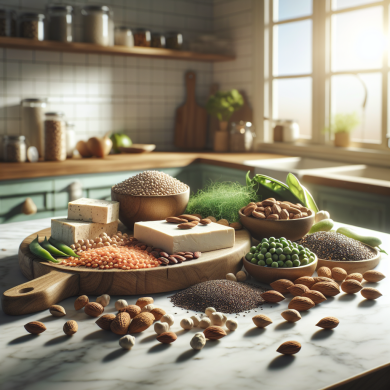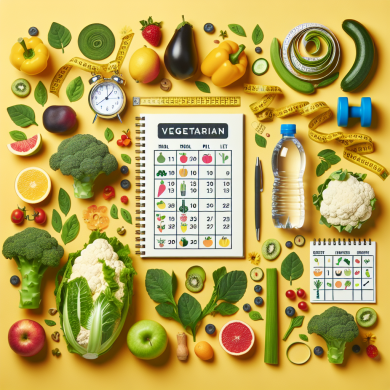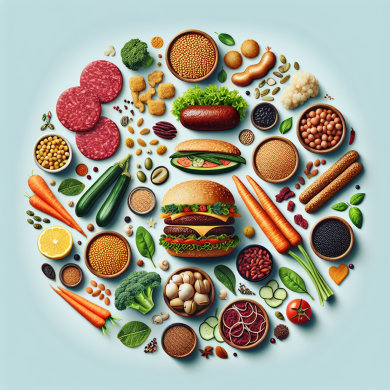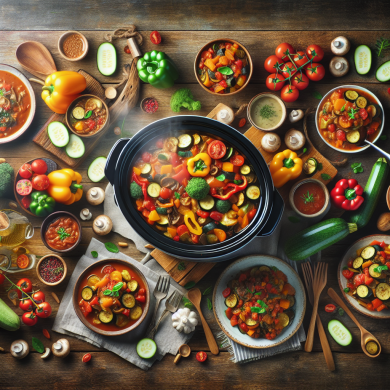Boost Iron Levels with Plant-Based Power Foods
The Importance of Iron in the Diet
Iron is an essential mineral that plays a crucial role in various bodily functions. It is a key component of hemoglobin, the protein in red blood cells responsible for transporting oxygen throughout the body. Iron also supports muscle metabolism and healthy connective tissue, and it is necessary for physical growth, neurological development, cellular functioning, and synthesis of some hormones.
Iron deficiency is one of the most common nutritional deficiencies worldwide, leading to anemia and causing symptoms such as fatigue, weakness, and impaired cognitive function. While meat is often highlighted as a primary source of dietary iron, it is entirely possible to meet and even boost your iron levels through a plant-based diet.
Types of Iron: Heme vs. Non-Heme
Iron is available in two forms: heme and non-heme. Heme iron is found in animal products and is more readily absorbed by the body. Non-heme iron, the type found in plant foods, is not absorbed as efficiently. However, with the right dietary practices, the absorption of non-heme iron can be significantly enhanced.
Iron Absorption Enhancers
To maximize the absorption of non-heme iron from plant-based foods, it is important to combine them with enhancers. Vitamin C is a well-known enhancer that can increase the absorption of non-heme iron by up to six times. Foods rich in vitamin C include citrus fruits, strawberries, bell peppers, and broccoli. Additionally, the consumption of organic acids, such as citric acid and malic acid found in fruits and vegetables, can improve iron absorption.
Iron Inhibitors to Avoid
Certain substances can inhibit the absorption of non-heme iron. Phytates, found in whole grains, nuts, seeds, and legumes, can bind to iron and hinder its absorption. Similarly, polyphenols in tea, coffee, and cocoa, as well as calcium in dairy products, can reduce iron absorption. It is advisable to consume these inhibitors at different times from iron-rich meals.
Top Plant-Based Sources of Iron
While non-heme iron requires some dietary strategies to enhance its absorption, there are numerous plant-based foods that can serve as excellent sources of iron. Here are some of the top contenders:
1. Legumes
Legumes, including lentils, chickpeas, and beans, are rich in iron and versatile enough to be included in a variety of dishes. Lentils, for instance, provide about 6.6 mg of iron per cup when cooked. To boost iron absorption, pair legumes with vitamin C-rich foods such as tomatoes or bell peppers.
2. Tofu and Tempeh
Tofu and tempeh are soy-based products that not only provide a good amount of iron but also offer high-quality protein. A half-cup serving of tofu contains around 3.4 mg of iron. Tempeh, being fermented, might have slightly better iron absorption due to reduced phytate content.
3. Nuts and Seeds
Nuts and seeds, including pumpkin seeds, sesame seeds, and almonds, are compact sources of iron. A quarter-cup of pumpkin seeds contains about 2.5 mg of iron. Incorporating a variety of nuts and seeds into your diet can contribute to meeting your iron needs.
4. Leafy Greens
Dark leafy greens like spinach, kale, and Swiss chard are not only rich in iron but also packed with other essential nutrients. For example, a cup of cooked spinach contains about 6.4 mg of iron. Pairing these greens with foods high in vitamin C can enhance iron absorption significantly.
5. Quinoa
Quinoa is a gluten-free grain that is high in protein and iron. It contains approximately 2.8 mg of iron per cup when cooked. Quinoa can be used as a base for salads, bowls, or as a side dish, offering both versatility and nutrition.
6. Whole Grains
Whole grains such as oats, brown rice, and fortified cereals can be good sources of iron. While phytates in these grains can inhibit iron absorption, soaking, fermenting, or sprouting can reduce phytate levels and enhance iron availability.
Incorporating Plant-Based Iron into Your Diet
To effectively increase your iron levels with plant-based foods, consider the following meal ideas and tips:
– Start your day with a bowl of iron-fortified cereal topped with fresh berries and a splash of almond milk. The vitamin C in the berries will help boost iron absorption.
– Prepare a salad with a mix of leafy greens, chickpeas, cherry tomatoes, and sunflower seeds. Dress it with a lemon-tahini dressing for an extra dose of vitamin C.
– Enjoy a stir-fry with tofu, broccoli, bell peppers, and quinoa. The combination of tofu and vitamin C-rich vegetables will enhance iron uptake.
– Snack on a handful of almonds and raisins. The natural sugars in raisins can help increase iron absorption.
– Make a hearty lentil soup with spinach and carrots. Add a squeeze of lemon juice before serving to enhance the iron content.
Monitoring Iron Status and Supplementation
While dietary changes can significantly improve iron levels, it is essential to monitor your iron status, especially if you follow a strict plant-based diet. Regular blood tests can help determine if you are meeting your iron needs. If you find it challenging to maintain adequate iron levels through diet alone, consult a healthcare professional about the possibility of supplementation.
Conclusion
Boosting iron levels with plant-based foods is not only feasible but can also be delicious and satisfying with the right approach. By focusing on iron-rich plant foods, incorporating absorption enhancers, and being mindful of inhibitors, you can effectively support your body’s iron needs without relying on animal products. As with any dietary change, it is important to listen to your body and seek professional guidance if needed to maintain optimal health.
Embrace the variety and abundance of plant-based foods available, and enjoy the journey to enhanced iron levels and overall well-being. With a little creativity and knowledge, a plant-based diet can be both nutritionally adequate and deeply fulfilling.















Add comment